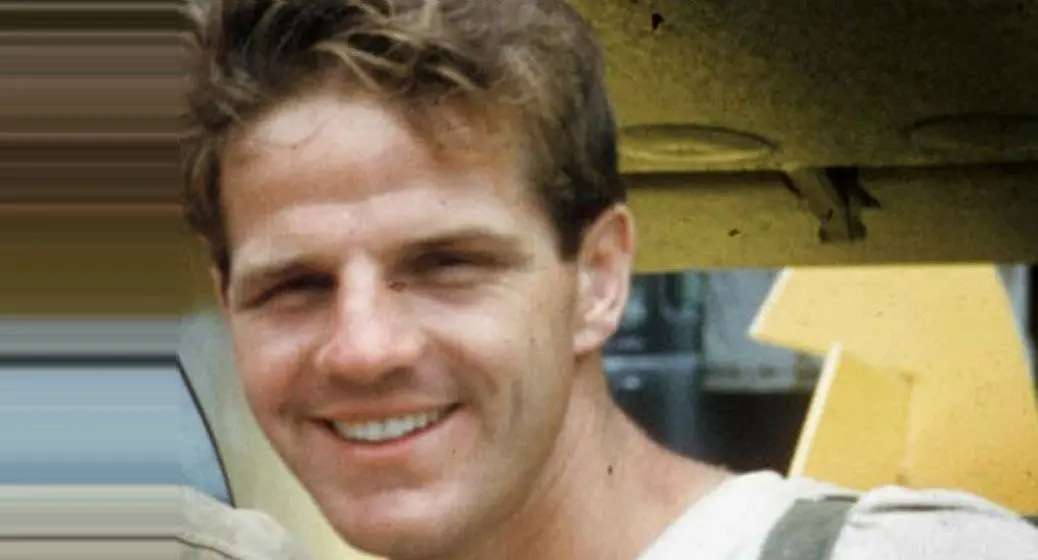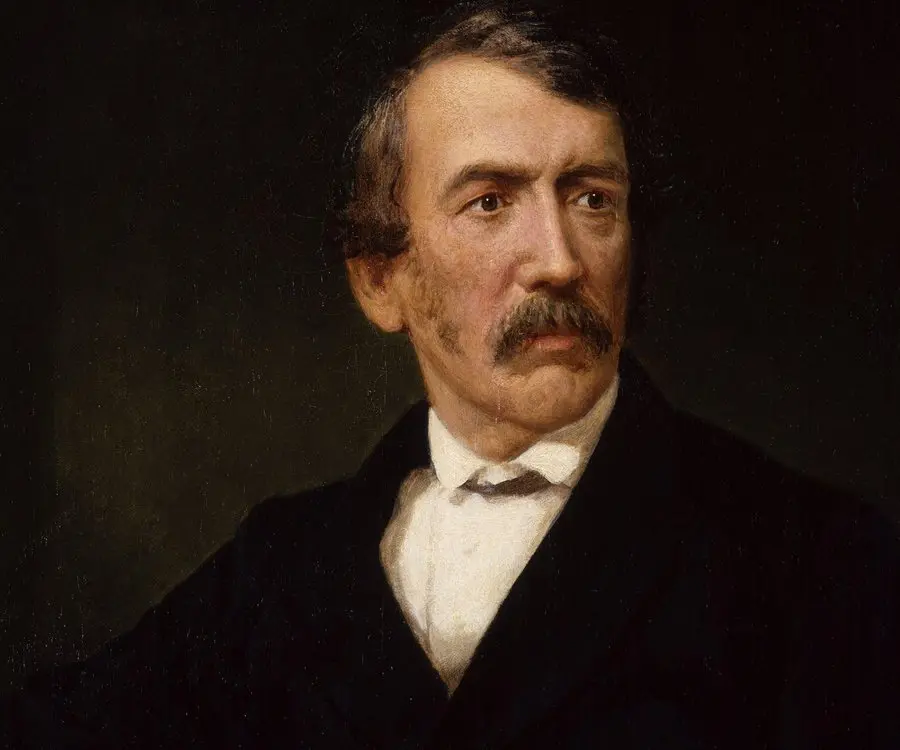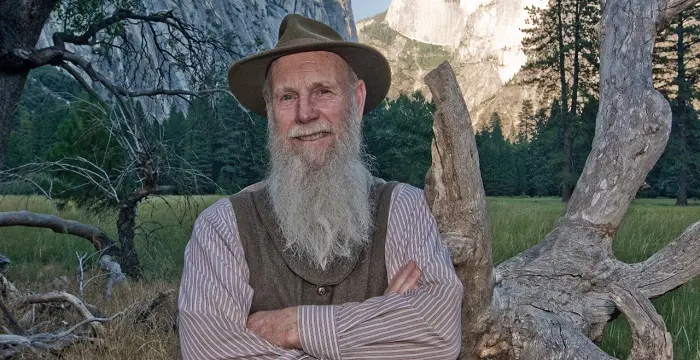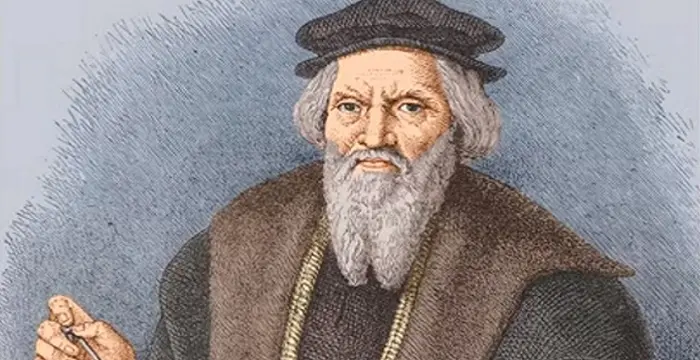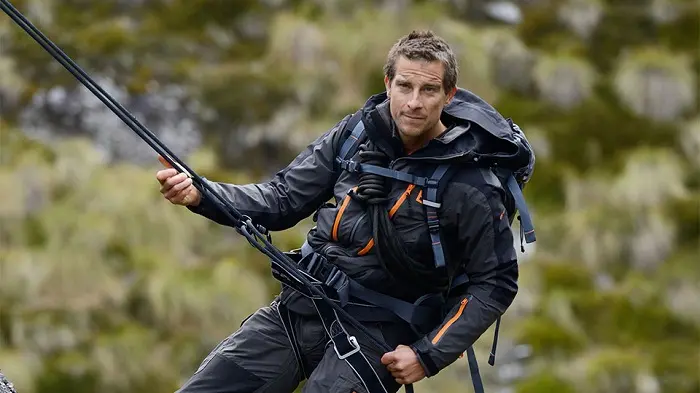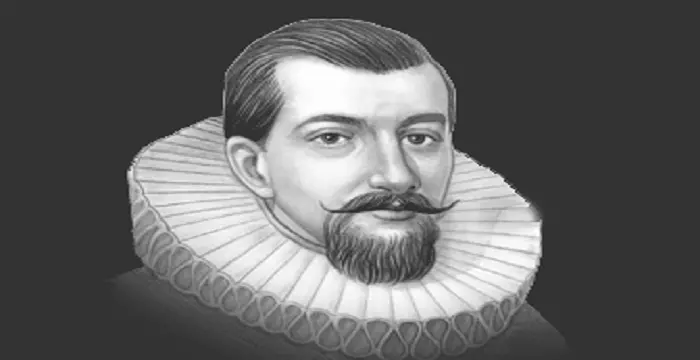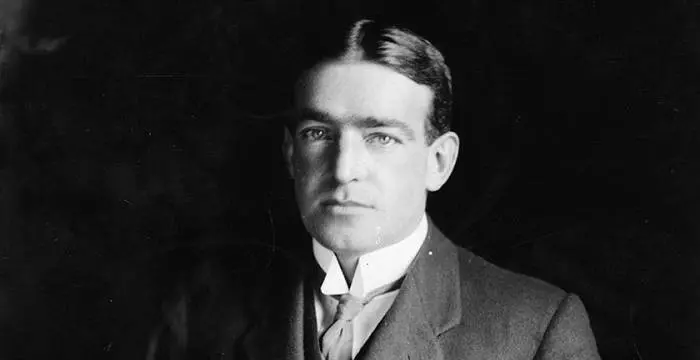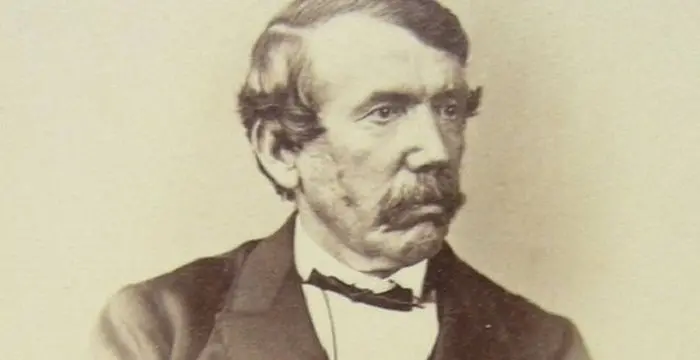
David Livingstone - Scottish Men, Life Achievements and Personal Life
David Livingstone's Personal Details
David Livingstone was a Scottish missionary, doctor and an explorer in Africa
| Information | Detail |
|---|---|
| Birthday | March 19, 1813 |
| Died on | May 1, 1873 |
| Nationality | British, Scottish |
| Famous | Miscellaneous, Explorers, Missionary, Scottish Men |
| Spouses | Mary Moffat |
| Siblings | Charles Livingstone |
| Childrens | Agnes, Elizabet, Robert, Thomas, William Oswell and and Anna Mary |
| Universities |
|
| Birth Place | Blantyre, South Lanarkshire, Scotland, UK |
| Born Country | Scotland |
| Religion | Calvinist |
| Gender | Male |
| Father | Neil |
| Sun Sign | Pisces |
| Born in | Blantyre, South Lanarkshire, Scotland, UK |
| Famous as | Explorer, Missionary |
| Died at Age | 60 |
// Famous Missionary
Johnny Appleseed
Johnny Appleseed was a legendary American nurseryman who is credited with the introduction of apple trees in large parts of the US. This biography provides detailed information about his childhood, family, personal life, career, etc.
Jim Elliot
Jim Elliot was an evangelical Christian Missionary. Explore this biography to know more about his childhood, career, profile and timeline.
William Carey
William Carey was an English Baptist missionary and a Baptist minister. This biography provides detailed information on his childhood, life, missionary activities, achievements and timeline.
David Livingstone's photo
Who is David Livingstone?
David Livingstone was a Scottish missionary, doctor and an explorer in Africa. He is well-known for his extensive explorations of the African continent. He was one of the most popular national heroes of the 19th century Victorian Britain. He is also credited for shaping the Western attitude towards Africa. He is credited with the discovery of various water bodies such as the famous Zambezi River and Victoria Falls. Seeing the atrocities of slavery he made efforts to help eradicate the African slave trade through ‘Christianity, Commerce and Civilization’. He was a missionary protestant, a scientific researcher, reformer with an inspirational story of rising from rags to riches. His missionary exploration and glorification as posthumous national hero in 1874 resulted in the formation of several central African Christian missionary initiatives and activities.
// Famous Scottish Men
John Muir
John Muir was a famous American naturalist, author and an advocate of wildlife preservation. This biography offers detailed information about his childhood, life, works, achievements and timeline.
Thomas Doherty
Thomas Doherty is a Scottish actor known for his role in Disney's ‘Descendants 2.’ Check out this biography to know about his childhood, family life, achievements and fun facts about him.
Connor Ball
Connor Ball is an Scottish bassist and a member of the band 'The Vamps'. Check out this biography to know about his birthday, childhood, family life, achievements, and fun facts about him.
Childhood & Early Life
David Livingstone was born on March 19, 1813 in a dwelling building for cotton factory workers in Blantyre, Scotland, to Neil Livingstone and Agnes as their second child.
Like other children in the mill, he also attended the Blantyre village school.
At the tender age of 10, he was working in the cotton mill of Henry Monteith & Co wherein he tied broken cotton threads on the spinning machines and later as a spinner too.
With the help and support of his family, he managed to study even after 14 hour long working shifts.
His father always encouraged David to study only Theology but David’s inherent passion for science could not keep him away from the subject for long.
He was always fascinated by the relationship shared by religion and science, which was further reinforced by missionary Karl Gützlaff's ‘Appeal to the Churches of Britain and America on behalf of China’.
The impact of a preacher like Ralph Wardlaw was so great that David quit the Church of Scotland for a local Congregational church
Being influenced by the appeal by Gutzlaff for medical missionaries for China in 1834, he resolved to study medicine.
David finally enrolled at the Anderson’s College (known for its science and technological education). Following this, he also studied Greek and theology at the University of Glasgow.
He studied medicine, midwifery and botany at the Charing Cross Hospital Medical School for two years (1838-40) for which he also learnt Latin from a local Roman Catholic, Daniel Gallagher.
David also joined the London Missionary Society (LMS) wherein he also continued his studies in the field of medicine and got associated with a church in Ongar, Essex.
Career
His passion for going to China was curbed by the Opium Wars of 1839-42 following which, his acquaintance with a renowned Scottish missionary, Robert Moffat from Africa ignited his passion for exploring Africa.
Without further delay, he set sail for South Africa on November 20, 1840 and reached Cape Town on March 14, 184.
David worked at the edge of the Kalahari Desert in southern Africa in 1841 wherein his conviction of exploring deeper in Africa and acquainting the people there with Christianity strengthened further.
He started off in 1849 to travel across the Kalahari following which he expedited the Lake Ngami in 1849 and the upper Zambezi River in 1851.
From 1852 onwards, four long years were spent hunting for a route from the explored Zambezi River to the coast.
The year 1855 marked the discovery of the famous ‘Victoria Falls’ following which he reached the origin of the river from the Indian ocean and the coastal region of Quelimane (modern day Mozambique) in 1856. Thus, he became the first European to cross Southern Africa in breadth.
His exploration helped unveil several facts about the African continent thereby fulfilling the incomplete western knowledge about the continent.
His work on his expeditions to Africa was published as ‘Missionary Travels and Researches in South Africa’ in 1857 which was highly acclaimed.
As a result of his explorations, Central Africa was further exposed to missionaries who took education, health care and other facilities to these areas. Trade was facilitated by the African Lakes Company which further improvised relations between Africa and Britain.
David spent the year 1858 in further exploring the eastern and central parts of Africa on behalf of the British Government which was not acclaimed on grounds of unsatisfactory results.
His return to England in 1864 was marked by his efforts to abolish slavery; in the context of which the ‘Narrative of an Expedition to the Zambesi and Its Tributaries’ was published which also covered the disease malaria.
Another exploration ended up with the discovery of Zanzibar in 1866. His pursuit of the origin of river Nile ended up with a village called Nyangwe where he saw a distressing carnage by Arabic slave traders.
David’s efforts in the eradication of slavery are not less known. His writings in the form of books, letters and journals did impact the society.
His support system coming from traders promoting slavery did not help him for long in his expeditions as a result he lacked expert advice and his last expedition was more with servants and slavery victims.
Awards & Achievements
David was honored with a gold medal by the British Royal Geographical Society for the first European exploration of Lake Ngami in 1849.
He was also made the Fellow of the Royal Geographical society; he kept the association with the society throughout his life.
Quite a number of statues have been erected in his honor all over the world like the one at Victoria Falls, Zimbabwe,
The town of Livingstonnia and the city of Blantyre, Malawi, have been named after David Livingstone and his birthplace respectively.
Various schools and hospitals in Africa have been named after him - The Rhodes–Livingstone Institute in Livingstone and Lusaka, Zambia, the David Livingstone Teachers’ Training College, The David Livingstone Clinic in Lilongwe, Malawi, Scottish Livingstone Hospital in Molepolole and many more.
The Livingstone College, Salisbury, North Carolina, the Livingstone Adventist Academy, Salem, Oregon and The Livingstone Healthservice in Jardìn Amèrica, Misiones, Argentina, have also been named in his honor.
His image was displayed on £10 notes issued by the Clydesdale Bank from 1971-1998.
Personal Life & Legacy
David married Mary Moffat on January 2, 1845, the daughter of Robert Moffat and had six children with her.
His wife Mary Moffat, born in Africa was a missionary by origin. Inflicted by ill health post marriage, she had a difficult time travelling with David. Succumbing to health issues, she passed away in 1862 leaving David alone in his missionary pursuits for another eleven years.
He was out of touch with the outside world due to severe illness with malaria and dysentery in his last years.
David’s accomplishments and acclaim came at the cost of his family. His failure to devote quality time with his wife and children was always regretted by him during his last years.
David Livingtone passed away at the age of 63 on May 1, 1873 in Chitambo, Zambia, from malaria and internal bleeding due to dysentery.
His attendants Chuma and Susi removed his heart and buried it under a Mvula tree which later became famous as the Livingstone Memorial. The rest of his remains were carried to Britain for burial. His body lay in repose at No.1 Savile Row, prior to interment at Westminster Abbey.
// Famous Miscellaneous
Jason Simpson
Jason Simpson is the son of former NFL running back, broadcaster and actor O. J. Simpson. Check out this biography to know about his childhood, family, life, and little known facts about him.
Melissa Brim
Melissa Brim is the ex-girlfriend of former professional boxer Floyd Mayweather Jr. Check out this biography to know about her birthday, childhood, family life, achievements and fun facts about her.
Joyce Meyer
Joyce Meyer is a Christian author and speaker. This biography provides detailed information about her childhood, life, achievements, works & timeline
David Livingstone biography timelines
- // 19th Mar 1813David Livingstone was born on March 19, 1813 in a dwelling building for cotton factory workers in Blantyre, Scotland, to Neil Livingstone and Agnes as their second child.
- // 1834Being influenced by the appeal by Gutzlaff for medical missionaries for China in 1834, he resolved to study medicine.
- // 1838 To 1840He studied medicine, midwifery and botany at the Charing Cross Hospital Medical School for two years (1838-40) for which he also learnt Latin from a local Roman Catholic, Daniel Gallagher.
- // 1839His passion for going to China was curbed by the Opium Wars of 1839-42 following which, his acquaintance with a renowned Scottish missionary, Robert Moffat from Africa ignited his passion for exploring Africa.
- // 20th Nov 1840Without further delay, he set sail for South Africa on November 20, 1840 and reached Cape Town on March 14, 184.
- // 1841David worked at the edge of the Kalahari Desert in southern Africa in 1841 wherein his conviction of exploring deeper in Africa and acquainting the people there with Christianity strengthened further.
- // 2nd Jan 1845David married Mary Moffat on January 2, 1845, the daughter of Robert Moffat and had six children with her.
- // 1849David was honored with a gold medal by the British Royal Geographical Society for the first European exploration of Lake Ngami in 1849.
- // 1852From 1852 onwards, four long years were spent hunting for a route from the explored Zambezi River to the coast.
- // 1855 To 1856The year 1855 marked the discovery of the famous ‘Victoria Falls’ following which he reached the origin of the river from the Indian ocean and the coastal region of Quelimane (modern day Mozambique) in 1856. Thus, he became the first European to cross Southern Africa in breadth.
- // 1857His work on his expeditions to Africa was published as ‘Missionary Travels and Researches in South Africa’ in 1857 which was highly acclaimed.
- // 1858David spent the year 1858 in further exploring the eastern and central parts of Africa on behalf of the British Government which was not acclaimed on grounds of unsatisfactory results.
- // 1862His wife Mary Moffat, born in Africa was a missionary by origin. Inflicted by ill health post marriage, she had a difficult time travelling with David. Succumbing to health issues, she passed away in 1862 leaving David alone in his missionary pursuits for another eleven years.
- // 1864His return to England in 1864 was marked by his efforts to abolish slavery; in the context of which the ‘Narrative of an Expedition to the Zambesi and Its Tributaries’ was published which also covered the disease malaria.
- // 1866Another exploration ended up with the discovery of Zanzibar in 1866. His pursuit of the origin of river Nile ended up with a village called Nyangwe where he saw a distressing carnage by Arabic slave traders.
- // 1st May 1873David Livingtone passed away at the age of 63 on May 1, 1873 in Chitambo, Zambia, from malaria and internal bleeding due to dysentery.
- // 1971 To 1998His image was displayed on £10 notes issued by the Clydesdale Bank from 1971-1998.
// Famous Explorers
John Cabot
John Cabot was an Italian navigator and explorer who was the first European to discover the coast of North America. Check out this biography to know about his childhood, life, and achievements.
Marco Polo
Marco Polo was the legendary Italian merchant, explorer and traveler, who travelled to China and worked under emperor, Kublai Khan. Read this biography to learn more about his profile, childhood, life and timeline.
Bear Grylls
Bear Grylls is an adventurer popularly known for his bizarre survival tactics in reality television series Man vs. Wild. This biography provides detailed information about his childhood, profile, career and timeline.
Henry Hudson
Henry Hudson was an early 17th century English navigator and explorer. This biography of Henry Hudson provides detailed information about his childhood, life, achievements, works & timeline
Francisco Vásquez de Coronado
Francisco Vazquez de Coronado was a Spanish conquistador who became one of the first Europeans to discover the Grand Canyon. This biography of Vazquez de Coronado provides detailed information about his childhood, life, achievements, works & timeline
Sir Ernest Shackleton
Ernest Shackleton was a celebrated Anglo-Irish polar explorer. This biography profiles his childhood, career, major expeditions, explorations, achievements and timeline.
David Livingstone's FAQ
What is David Livingstone birthday?
David Livingstone was born at 1813-03-19
When was David Livingstone died?
David Livingstone was died at 1873-05-01
Where was David Livingstone died?
David Livingstone was died in Lake Bangweulu, Chief Chitambo's Village (in modern-day Zambia)
Which age was David Livingstone died?
David Livingstone was died at age 60
Where is David Livingstone's birth place?
David Livingstone was born in Blantyre, South Lanarkshire, Scotland, UK
What is David Livingstone nationalities?
David Livingstone's nationalities is British, Scottish
Who is David Livingstone spouses?
David Livingstone's spouses is Mary Moffat
Who is David Livingstone siblings?
David Livingstone's siblings is Charles Livingstone
Who is David Livingstone childrens?
David Livingstone's childrens is Agnes, Elizabet, Robert, Thomas, William Oswell and and Anna Mary
What was David Livingstone universities?
David Livingstone studied at University of Glasgow, University of Strathclyde
What is David Livingstone's religion?
David Livingstone's religion is Calvinist
Who is David Livingstone's father?
David Livingstone's father is Neil
What is David Livingstone's sun sign?
David Livingstone is Pisces
How famous is David Livingstone?
David Livingstone is famouse as Explorer, Missionary

